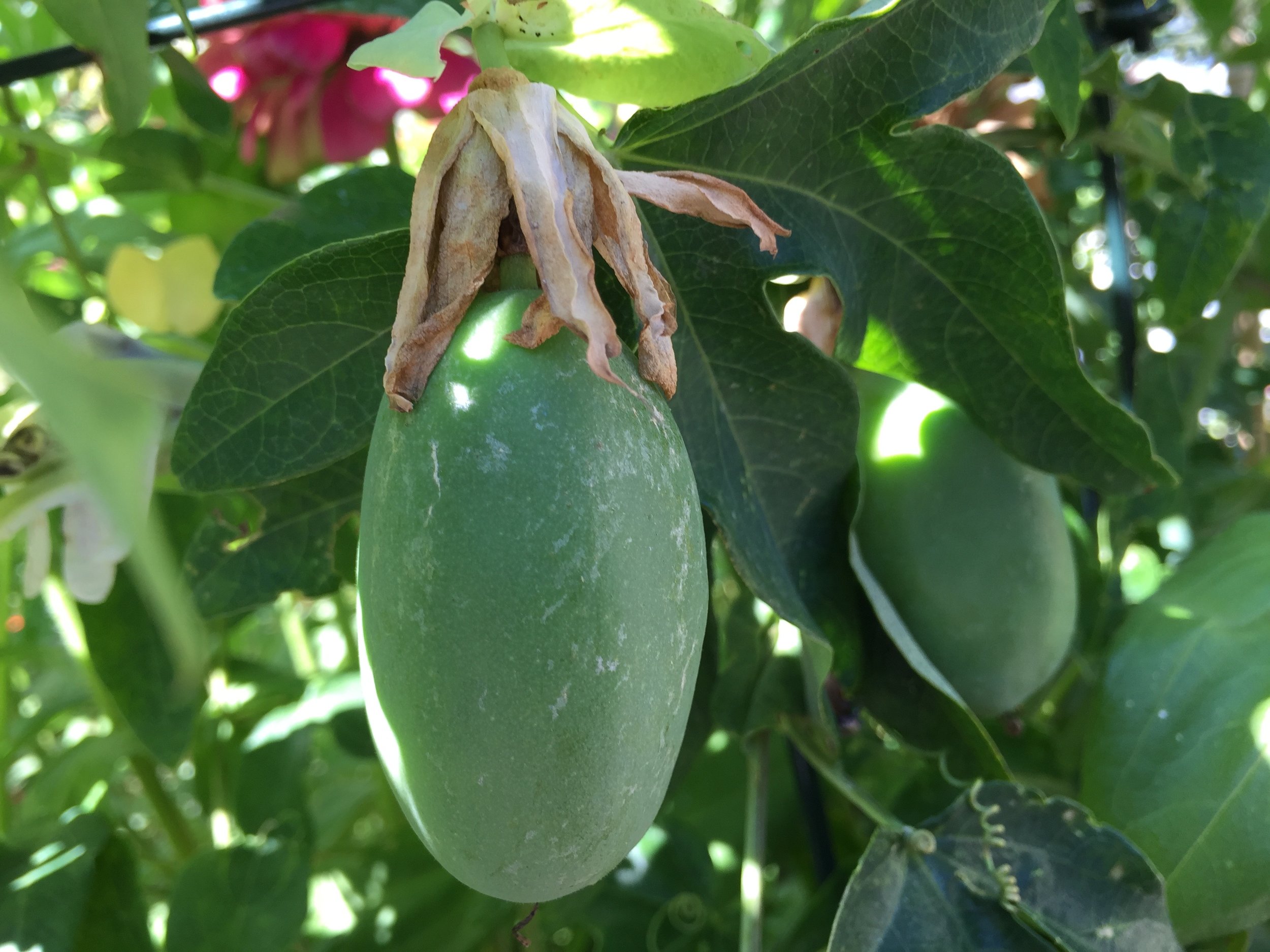Oh my goodness, I could not be happier about the South Pollinator Garden right now. I know I’ve written about this garden, and the pollinators, and specifically the Gulf Frittilaries before. But I have to write about it again, because I’m having such a good time visiting the Passion Vine! And I’m not the only one…. day after day I go out there to see what’s happening, and since it’s right next to the sidewalk, there is always someone else there checking it out too. It’s so fun to stand there and watch and chat with someone else about the ecosystem in the Passion Vine! They’ll see something I didn’t see, and I’ll see something they didn’t see, and it’s like this big treasure hunt. Sometimes I wish I still had little kids, because wouldn’t this be a great opportunity for them to learn about a particular life cycle?
From our side
Ok, so back in late spring, my neighbor rebuilt this fence and cut down all the bushes on his side that were growing tall and keeping the deer out of our garden. I knew I needed to put something here that would add that height, so the deer wouldn’t take advantage of the gap in security. I bought a rather cheapo folding trellis from Gardener’s Supply (I can’t afford anything fancy, and building something would take too long), stuck it along the fence line, went to Annie’s Annuals and bought eight passionflower vines, which I then planted at the base of the trellis, and made sure the drip line was all along that base line. I think 4-5 of the plants survived and started climbing. They weren’t even a foot high before I noticed Gulf Frittilary butterflies had found them, which made me very happy.
From the neighbor’s side
Through the summer, the vine grew up and along the top of the trellis, fulfilling perfectly the job of deer deterrent. The pollinator garden grew up around it, the zinnias and the tithonia reaching for the sky, some higher than our redbud tree. And the butterflies just kept coming, flitting about in a mating dance, sipping nectar from the flowers, and laying eggs on the passionflower leaves.
The vine has deeply divided simple leaves, which are lovely to look at, along with the tendrils that cling to the trellis. And of course the flowers are beautiful. The butterflies lay a single egg at a time (or at least I’ve never seen them in clusters) and the eggs are gorgeous and shimmery when you get a lens that lets you actually see them clearly. The egg is there 3-5 days before it hatches. They are usually found on the topside of a leaf. They start out yellow, and then turn brownish before they hatch.
The female butterfly tests the chemical compounds in the leaf with her antennae, and knows that the plant is the correct host for her babies. The caterpillars eat the leaves, ingesting those chemical compounds, which hopefully makes them less attractive to birds. The larvae has five instars, or stages of growth, before they finally pupate on the passion vine (I can’t wait to see chrysalises!!!! Chrysali? oh who knows). The caterpillars are kinda cute in their own right, brownish reddish, and get this sort of blue-ish stripe as they get bigger.
The passionflower vine is now starting to fruit (see top picture), which is an added bonus that I didn’t really expect. I mean I know they fruit but I wasn’t sure if this was a fruiting variety. What a welcome time of year for fruit! I think they are supposed to get sort of hard and purplish brown, and then they are ripe. More on that as it happens. Passionflower jelly, here we come!
I’m not sure I’ve ever seen such a complete life cycle of any insect before, other than my honeybees. I plant specific flowers for insects all the time, such as fennel for anise swallowtails (had the caterpillars and adults, but never seen eggs or chrysalises), and dutchman’s pipevine for pipevine swallowtails (never seen any activity on it or around it, but hatched a chrysalis I brought in from a nearby creek), but this is the first time I’ve seen the whole thing from start to finish. It’s thrilling to watch.
And oh yeah, here’s the October wreath, finally:
This one is made out of California Bay Laurel. My mom gave me the idea. She grows several of these trees in her yard, and about once a year I ask her for some branches to dry as I use the leaves for cooking. She brought me a whole sheaf and said they could be used as a wreath AND a food. It was such a great idea that I promptly followed through. This plant smells nice fresh or dry, and will turn a handsome dusty sage color as it starts to lose moisture, so it should look good until November.








































